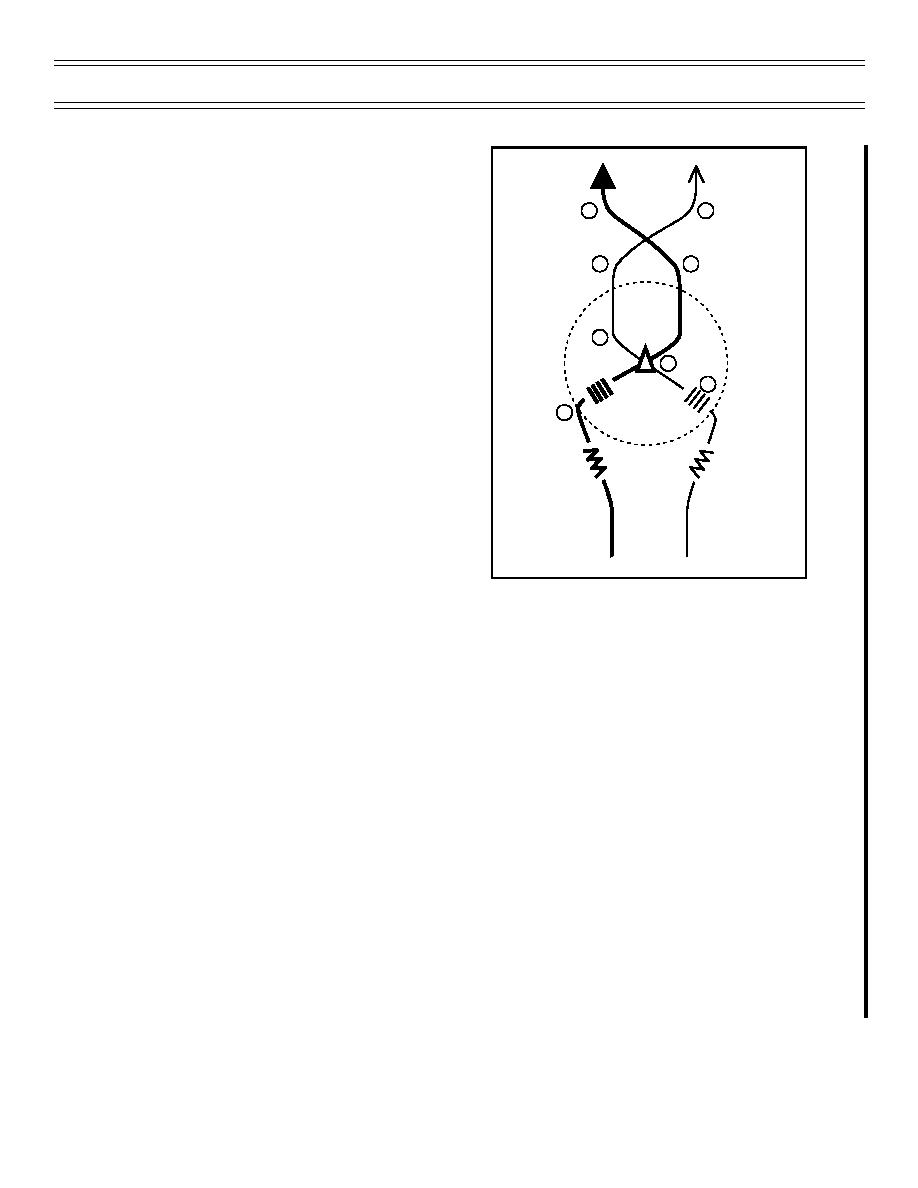
Two-Plane Road Reconnaissance
Operational Navigation Flight Training Instruction
Upon reaching the attack cone, focus your total
attention on the target (don't try to keep sight of lead
during roll-in) and roll-in according to the following:
8
7
1.
Throttle-remains at MRT until release.
2.
Overbank to put lift vector on the target (top
5
6
of the canopy) and pull down at 17 units.
3.
Stop the pull-down with the waterline or
velocity vector 4-5 degrees above the target
and roll out to set your initial sight picture.
4
4.
Check your dive angle to recognize the need
to adjust your next pop and roll-in technique.
3
5.
Scan from the target up the 30-degree plane
2
you are descending on to reacquire the lead
1
or wingman's aircraft.
6.
Lead will call "[callsign], in low" at
completion of his roll-in. Wingman will call
"[callsign] in high" at completion of his roll-in,
followed by "visual' once sight of lead is
regained.
7.
Track to the target!
8.
Scan from the target up the 30-degree plane
Lead
Wingman
to the wingman, and then to the HUD to
check sight picture and altitude and repeat
Figure 16: TARGET ATTACK
this scan until the solution or recovery altitude
is reached.
At the roll-in, the wingman is responsible for collision avoidance so a timely reacquisition of the lead is
required followed by the "visual" call. If the wingman cannot reacquire the lead, his attack may not be
continued and he will execute the high cover procedure to be discussed. Also, lead must be heads up for
the "visual" call. If visual is not heard within about four seconds, lead should call "Understand visual?" as
an interrogative to get the visual call, or prompt the wingman to execute a high cover.
While the wingman is responsible for the visual and deconfliction in the dive, it is also important for the
lead to acquire his wingman. The important aspects of both being visual are:
1.
Mutual support and lookout are in effect.
2.
Having a visual in the dive builds awareness of relative aircraft position.
3.
When lead and wing determine relative aircraft position, each will be able to judge what type of
maneuvering will be required after weapon release and the nose is recovered to the horizon.
The egress direction is just as important as determining relative position in executing a maneuver to
expeditious combat spread off target. Turning to the egress direction will take some amount of time and
needs to be considered, especially when the egress is perpendicular to the attack axis.
(7-99) Original
Page 35


 Previous Page
Previous Page
